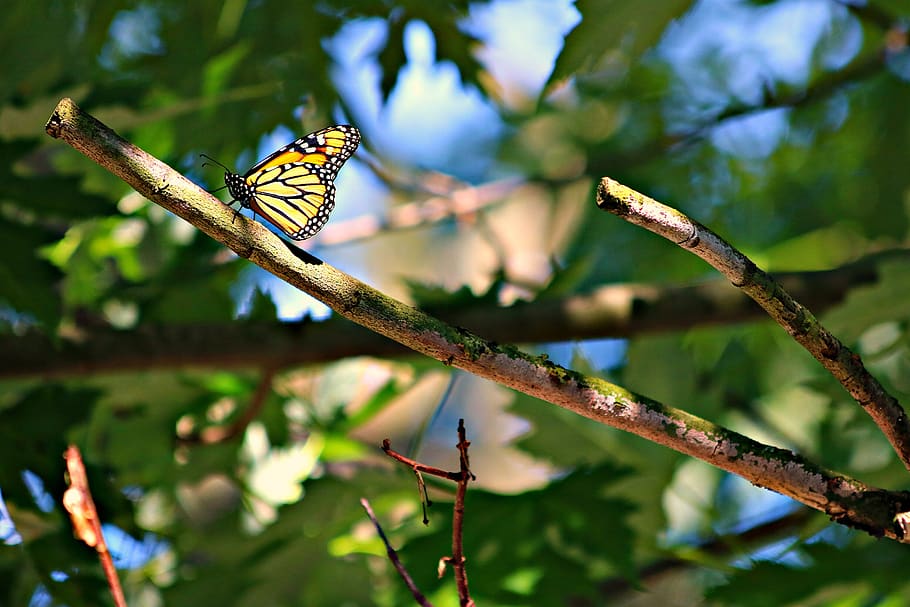Welcome to our comprehensive guide on identifying and treating common tree pests in Belleville, Illinois. Trees are a vital part of our ecosystem, providing shade, oxygen, and aesthetic beauty to our surroundings.
However, various pests and diseases can threaten the health and longevity of these valuable assets. In this article, we will explore the most prevalent tree pests in Belleville and offer effective strategies to combat them.
Whether you are a homeowner, gardener, or arborist, this guide will equip you with the knowledge and tools to protect your trees and keep them flourishing for years to come.
1. The Importance of Tree Health
Before delving into the specifics of tree pests, let’s understand why maintaining tree health is crucial. Trees contribute significantly to the environment by absorbing carbon dioxide, producing oxygen, preventing soil erosion, and providing habitats for wildlife. Healthy trees also enhance property values and improve the overall quality of life in a community.
2. Common Tree Pests in Belleville IL
Belleville, IL, is home to various tree pests that can cause harm if left unaddressed. Some of the most common pests include:
- Emerald Ash Borer (Agrilus planipennis): This invasive beetle attacks ash trees, laying eggs under the bark and disrupting the tree’s ability to transport water and nutrients.
- Gypsy Moth (Lymantria dispar): The caterpillars of the gypsy moth can defoliate entire trees, weakening them and making them susceptible to other diseases.
- Asian Longhorned Beetle (Anoplophora glabripennis): These beetles target a wide range of deciduous trees, burrowing into the wood and causing structural damage.
- Eastern Tent Caterpillar (Malacosoma americanum): These caterpillars construct large silk tents in tree branches, consuming leaves and potentially defoliating the tree.
- Dutch Elm Disease (Ophiostoma ulmi): This fungal disease affects American elms, leading to wilting, yellowing leaves, and eventual death of the tree.
- Bagworms (Thyridopteryx ephemeraeformis): These caterpillars create protective bags made of leaves and silk while feeding on various trees, causing defoliation.
- Scale Insects (Superfamily Coccoidea): These small insects attach themselves to tree branches and suck sap, weakening the tree over time.
3. Identifying Tree Pest Infestations
Detecting tree pest infestations early is crucial for effective treatment. Here are some signs to look out for:
- Wilting or Discolored Leaves: Infested trees may show wilting, discoloration, or premature leaf drop.
- Holes and Boring Marks: Check the bark for small holes, tunnels, or sawdust-like frass, indicating the presence of borers or other wood-boring pests.
- Silken Nests: Tent-like nests in tree branches are a sign of caterpillar infestations, such as the Eastern Tent Caterpillar.
- Visible Insects: Some pests, like bagworms or scale insects, may be visible on the tree’s surface.
- Unusual Growth: Abnormal bumps or swelling on branches could indicate the presence of scale insects.
4. Effective Tree Pest Treatments
Once you’ve identified a tree pest infestation, it’s essential to take prompt action. Here are some effective treatments to combat common tree pests in Belleville IL:
- Insecticidal Sprays: Targeted insecticidal sprays can be used to control pests like bagworms, aphids, and mites. Follow label instructions and avoid spraying during windy conditions.
- Biological Control: Introducing natural predators or parasites of tree pests, such as ladybugs or parasitic wasps, can help keep pest populations in check.
- Pruning and Removing Infested Branches: For pests like the gypsy moth or tent caterpillars, pruning and destroying infested branches can prevent further spread.
- Soil Drenching: Systemic insecticides can be applied to the soil, where they are taken up by the tree’s roots and transported throughout the tree, providing long-term protection.
- Trunk Injection: This method involves injecting insecticides directly into the tree trunk, targeting pests like the emerald ash borer.
- Preventative Measures: Regularly inspect and maintain the health of your trees to prevent infestations. Proper watering, mulching, and fertilization can boost tree immunity.
FAQs
Q: How can I tell if my tree has an emerald ash borer infestation?
A: Look for D-shaped exit holes, S-shaped galleries under the bark, and thinning canopy as signs of emerald ash borer infestation.
Q: Are all caterpillars harmful to trees?
A: No, not all caterpillars are harmful. Many caterpillars are essential parts of the ecosystem and serve as food for birds and other wildlife. However, certain caterpillar species, like gypsy moths, can be destructive to trees.
Q: Can I use organic methods to control tree pests?
A: Yes, organic methods like introducing natural predators or using horticultural oils can be effective for controlling some tree pests.
Q: How can I protect my trees from diseases like Dutch Elm Disease?
A: Regularly prune dead and infected branches, practice proper sanitation, and consider planting disease-resistant tree varieties.
Q: Is it possible to save a severely infested tree?
A: In some cases, especially if the tree is valuable or rare, it may be worth consulting with a certified arborist to determine if treatments can save the tree.
Q: Can I use neem oil to treat scale insect infestations?
A: Yes, neem oil is an effective organic remedy for controlling scale insects.
Conclusion
Maintaining the health and well-being of trees in Belleville, IL, requires vigilance and prompt action when dealing with tree pests. By identifying signs of infestations early and implementing appropriate treatment methods, you can protect your trees and ensure their longevity.
Remember that professional arborists are valuable resources for complex or severe infestations. Let’s work together to preserve the beauty and benefits that trees bring to our community.

